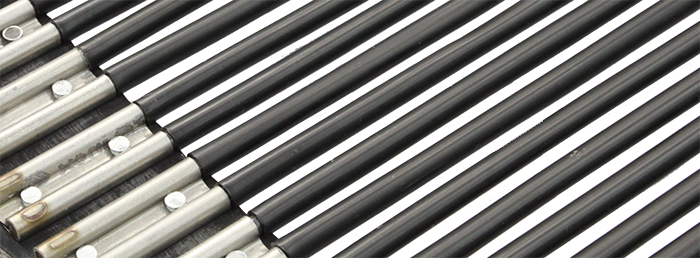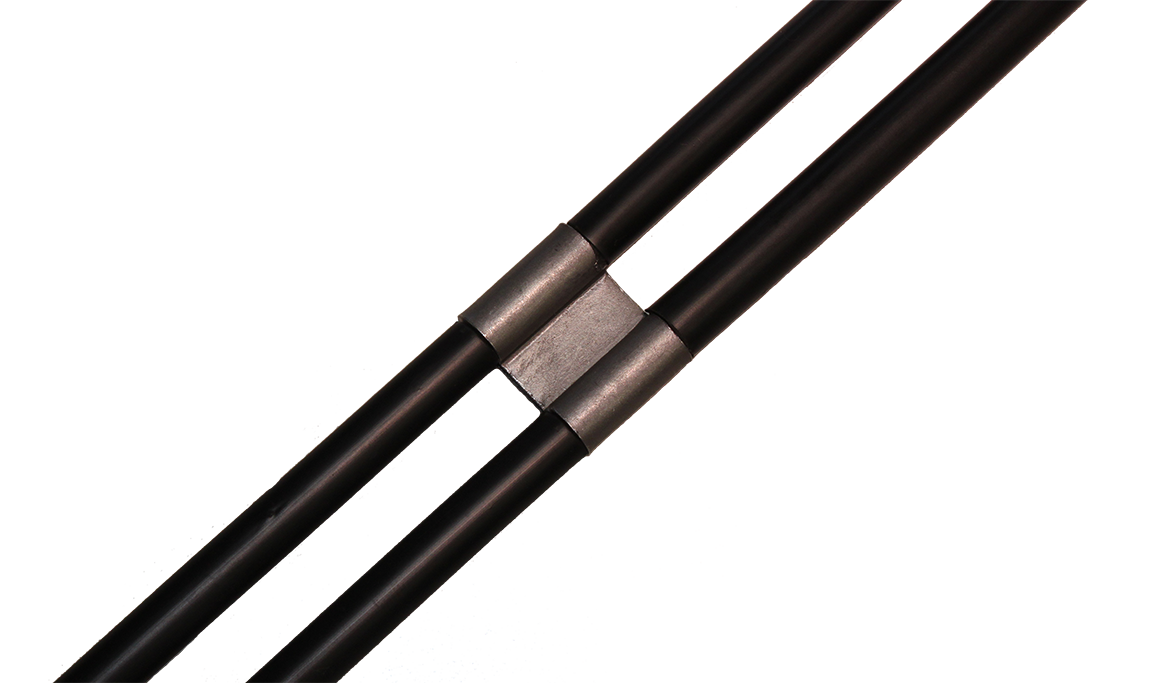Twin webs
For the processing of small products, such as flower bulbs, we produce webs with “twin rods”. A twin rod consists of 2 rods, which are clamped together at their ends, by a tube. The actual pitch is half of the belt pitch. With the use of rod coverings we can create a gap as small as 2mm. Twin rods are also standard constructed with spring steel rods, though stainless steel and glass fibre rods are also available.

Outer belt

S belt with twin rods
Centre belt

Centre belt with twin rods
Centre reinforcement
In order to keep the gap between 2 rods consistent can be chosen for centre reinforcement. This is often used when the rods have a small diameter or the span between 2 belts is large.

Stokmaat

In determining the correct width of the sieve web, it is important that the twin rods have the correct “stokmaat”. This is the distance between the two outside rivet holes, C.T.C. When ordering loose twin rods it is important that you mention the stokmaat as well as the distance between the holes in one end. Without further notice, we assume this distance to be 20mm in 50mm wide traction belts and 32mm in 60 or 75mm wide traction belts. On request we can also make these distances 24 or 30mm
Rod material
Spring steel
Our twin rods are standard made of spring steel class C (DIN 17228). However we can also make twin rods of CrSi-steel, stainless steel or glass fibre. After consultation with you, we can also use other materials so that the produced web will meet your expectations as good as possible.
CrSi
For use in rough circumstances, for instance in stone separators, we can make the rods out of stronger materials. Here we use CrSi steel (spring steel, class super C) CrSi steel is harder and tougher than spring steel class C. Furthermore it has all the properties of regular spring steel. CrSi steel is available in the diameters 6, 8, 9, 10, 11 and 12mm. A great advantage of CrSi steel is the fact that it is very suitable for welding.
Stainless steel
Stainless steel is often used in water. All metals used in these sieve webs are made of stainless steel. Stainless steel is available in the diameters 6, 7, 8, 10, 11 and 12mm.
Glass fibre
To save weight we can use rods out of glass fibre. The glass fibres provide great tensile strength. A sieve web with these rods can weigh up to 50% less than a web with steel rods. Another advantage is that these rods don’t rust. Glass fibre rods are available in the diameters 6, 8 and 10mm.
